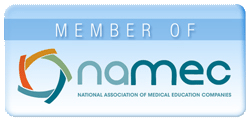Gaining Ground in Men's Genitourinary Health: Maximizing Outcomes for Patients with Benign Prostatic Hyperplasia and Erectile Dysfunction
Premiere Date: Friday, August 23, 2013This activity offers CE credit for:
- Physicians (CME)
- Nurses (CNE)
- Pharmacists (ACPE)
- Other
All other clinicians will receive a Certificate of Attendance stating this activity was certified for AMA PRA Category 1 Credit™
Credit Expiration Date:
Tuesday, August 23, 2016
Note: Credit Is No Longer Available
 | Matt T. Rosenberg, MD Medical Director Mid-Michigan Health Centers Department of Family Practice Allegiance Health Jackson, MI |
Prostate enlargement, or benign prostatic hyperplasia (BPH), is a common disease in men with initial development usually occurring after 40 years of age. At the age of 60, its prevalence is greater than 50% and by age 85 is as high as 90%.1 Where the prostate enlarges, often lower urinary tract symptoms (LUTS) begin to appear and may become bothersome. In addition, erectile dysfunction (ED) and BPH are commonly co-occurring conditions.2 Effective, evidence-based assessment of BPH and ED in aging men, as well as optimal, patient-centered clinical management, can dramatically improve men’s quality of life.1
This educational activity will engage and prepare primary care clinicians for overcoming the gap in recognizing and treating BPH and BPH/ED combination in patients presenting with urological symptoms associated with LUTS. This video-based activity was recorded at the live symposium at the Georgia Association of Physician Assistants (GAPA) Summer Meeting in South Carolina, July 17th, 2013.
- McVary KT [chair], Roehrborn CG [co-chair], et al.; American Urological Association [AUA]. American Urological Association Guideline: Management of Benign Prostatic Hyperplasia (BPH). AUA Website. http://www.auanet.org/common/pdf/education/clinical-guidance/Benign-Prostatic-Hyperplasia.pdf. Revised 2010. Accessed July 24, 2013.
- Brookes ST, Link CL, Donovan JL, McKinlay JB. Relationship between lower urinary tract symptoms and erectile dysfunction: results from the Boston Area Community Health Survey. J Urol. 2008;179(1):250-255. PMID: 18001787.
This educational activity centers on the CMEO Make One Change (M1C) Statement. This statement is crafted from pertinent quality measures or clinical guidelines as a performance challenge to all participants. The M1C Statement for this activity is: To improve diagnosis and nonsurgical treatment (by primary care clinicians) of men with benign prostatic hyperplasia (BPH), including those who have concomitant erectile dysfunction (ED), in accordance with best-practice recommendations.
At the end of this CE activity, participants should be able to:
- Explain the shared pathophysiology that underlies benign prostatic hyperplasia (BPH) and erectile dysfunction (ED).
- Correlate the mechanistic activity of pharmacotherapy with the rational use of combination pharmacotherapy in men with BPH and concomitant ED.
- Demonstrate systematic, patient-centric and measurement-based mastery in the ability to employ an effective strategy for evaluating men at midlife and older who have genitourinary complaints.
- Implement the American Urological Association-compliant diagnostic and treatment plans for men with BPH, who may also have concomitant ED.
The following learning objectives pertain only to those requesting CNE or CPE credit:
- Review the physiology of both benign prostatic hyperplasia (BPH) and erectile dysfunction.
- Consider that there can be a common comorbidity with benign prostatic hyperplasia (BPH) and erectile dysfunction (ED).
This activity is supported by an educational grant from Lilly. For further information concerning Lilly grant funding visit www.lillygrantoffice.com.
Physicians, physician assistants, nurse practitioners, nurses and other health care professionals who may manage or counsel patients who present with urological symptoms.
CME Credit (Physicians):
CME Outfitters, LLC, is accredited by the Accreditation Council for Continuing Medical Education to provide continuing medical education for physicians.
CME Outfitters, LLC, designates this enduring material for a maximum of 1.0 AMA PRA Category 1 Credit™. Physicians should claim only the credit commensurate with the extent of their participation in the activity.
CNE Credit (Nurses):
Provider approved by the California Board of Registered Nursing, Provider Number CEP 15510, for 1.0 contact hour. This program is approved for pharmacology credit.
CPE Credit (Pharmacists):
![]() CME Outfitters, LLC, is accredited by the Accreditation Council for Pharmacy Education as a provider of continuing pharmacy education. 1.0 contact hours (0.1 CEUs)
CME Outfitters, LLC, is accredited by the Accreditation Council for Pharmacy Education as a provider of continuing pharmacy education. 1.0 contact hours (0.1 CEUs)
Universal Activity Number: 0376-0000-14-014-H01-P (recorded programs)
Activity Type: knowledge-based
Post-tests, credit request forms, and activity evaluations must be completed online at www.cmeoutfitters.com/TST814 (requires free account activation), and participants can print their certificate or statement of credit immediately (80% pass rate required). This website supports all browsers except Internet Explorer for Mac. For complete technical requirements and privacy policy, visit www.neurosciencecme.com/technical.asp.
Disclosure Declaration
It is the policy of CME Outfitters, LLC, to ensure independence, balance, objectivity, and scientific rigor and integrity in all of their CME/CE activities. Faculty must disclose to the participants any relationships with commercial companies whose products or devices may be mentioned in faculty presentations, or with the commercial supporter of this CME/CE activity. CME Outfitters, LLC, has evaluated, identified, and attempted to resolve any potential conflicts of interest through a rigorous content validation procedure, use of evidence-based data/research, and a multidisciplinary peer review process. The following information is for participant information only. It is not assumed that these relationships will have a negative impact on the presentations.
Dr. Rosenberg has disclosed that he has served as an advisor, consultant or speaker for: Astellas Pharma, Inc; Easai, Ferring Pharmaceuticals; Horizon Pharma; Lilly USA, LLC; Pfizer Inc.
Jeffrey Helfand, DO, MS (content/peer reviewer) has nothing to disclose.
Jeffrey M. McEver, PA-C (content/peer reviewer) has nothing to disclose.
Robert Kennedy (planning committee) has nothing to disclose.
Monique Johnson, MD, CCMEP (planning committee) has nothing to disclose.
Joy Bartnett Leffler, MLA, NASW, CSE (planning committee) has nothing to disclose.
Sandra Haas Binford, MAEd (planning committee) has nothing to disclose.
Sharon Tordoff, CCMEP (planning committee) has nothing to disclose.
Questions about this activity? Call us at 877.CME.PROS (877.263.7767).
MMV-049-082313-11



